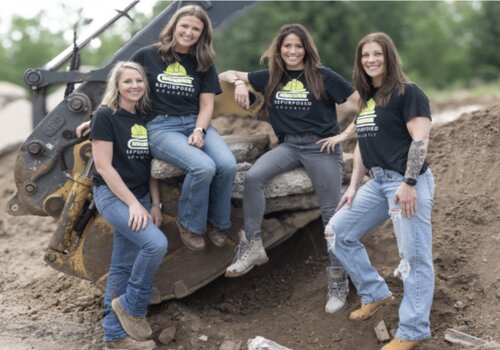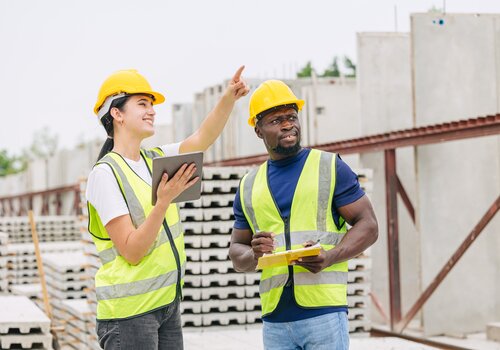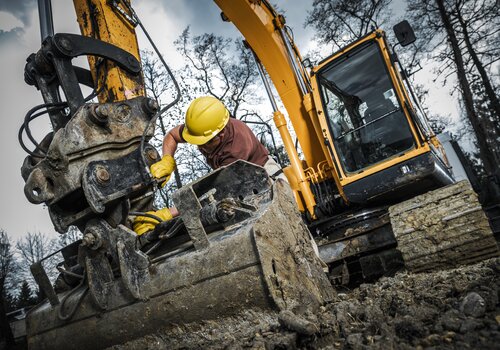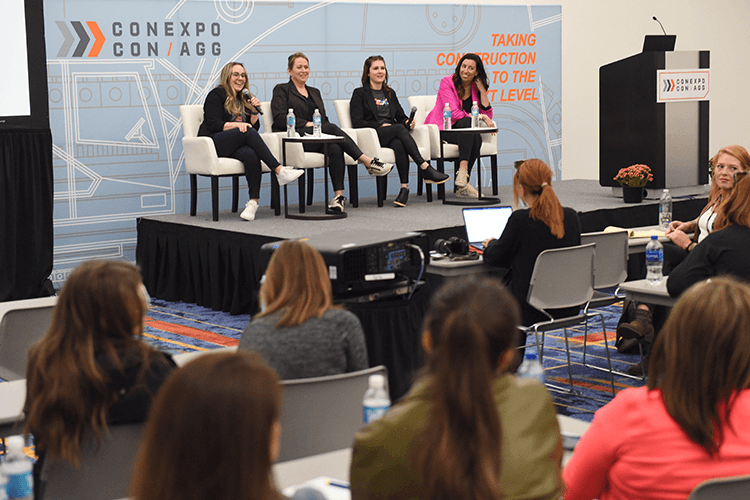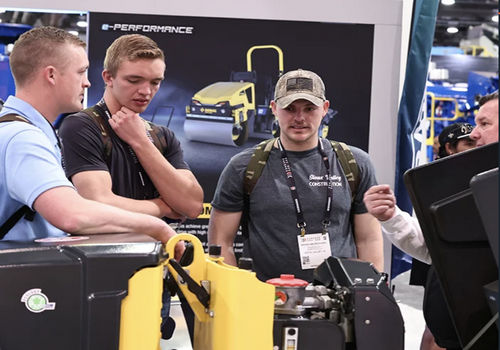How do you keep COVID-19 off the construction site?
Barry Schlouch, president and cofounder of Schlouch Incorporated, thinks he’s figured out a way to do it—and he’s made it his company’s goal.
“We want zero COVID-19,” Schlouch says. “Some people will say that's a little extreme. Well, I don't think so. What's wrong with having zero COVID-19? I think it's a good thing.”
He says it starts by promoting safety as a priority throughout the organization. Through careful development and implementation of its meticulous safety plans, Schlouch Incorporated, based in Blandon, Pennsylvania, celebrated zero lost-time injuries last year, and now the site development contractor is aiming to do the same during the COVID-19 pandemic.
With $80 million in annual revenue, Schlouch Incorporated has 285 employees and about 300 pieces of equipment in its fleet. The contractor focuses its work primarily in Central and Eastern Pennsylvania, with recent projects including the sitework for a $150-million expansion of Hersheypark and an emergency room expansion and new hospital campus for the Lehigh Valley Health Network.
Schlouch Incorporated’s safety environment has taken years of intentional consistency to create.
“At our company, we have three main priorities,” he says. “The first priority is the safety of the people. The second priority is the safety of people. The third priority is the safety of the people.
“I keep those three because sometimes priorities can veer off. You can't veer off when the three are the same. If we fade on priority number one, we go to priority number two, which is the same thing. If we fade on priority number two, we go to priority number three, which is the same thing. It doesn't matter which priority you go to, we get the same outcome.”
He says staying committed to fostering a safe construction environment goes hand-in-hand with future success.
“What I found is that safety takes mindfulness, thoughtfulness, planning, preparation, process, execution and accountability,” Schlouch says. “When you really get that down, you can do the rest. The mindset of safety paves the way for quality and production.”
At Schlouch Incorporated, 13 professionals with their Safety Trained Supervisor Construction certification oversee their jobsites and the company’s plans to prevent the “Fatal Four” incidents in construction, which include falls, getting struck by an object, electrocution, and getting caught in or between an object. According to OSHA, eliminating the “Fatal Four” incidents would save nearly 600 workers’ lives in the United States every year.
In March, as Schlouch was at CONEXPO-CON/AGG in Las Vegas, the world changed, and the company realized it needed to figure out how it was going to respond to the pandemic. The STSCs came to Schlouch with an idea.
“What our STSCs said is, ‘Barry, we need to design a plan for ‘Fatal Five,’" Schlouch says. “What's ‘Fatal Five?’ Well, the fifth is COVID-19. We designed safety protocols of how you mitigate and prevent COVID-19 just like you do with a fall, just like you do with the electrical, just like you do with trenching.”
The decision to treat COVID-19 like other major construction safety incidents is instrumental to its prevention, Schlouch says.
“In the hierarchy of controls, the first line of defense is always to eliminate the hazard,” he says. “What you want to do with COVID-19 is you want to keep it off the job or out of the office.”
Create Online Training Resources
Schlouch Incorporated turned its COVID-19 prevention plan into a narrated, 12-minute online training program, based off CDC and OSHA guidance.
All employees must adhere to the company’s safety plan, which includes nearly 30 specific COVID-19 infection control protocols, and it is part of new hire orientation, as well as posted for reference on the company’s online portal. The safety plan is updated continually in accordance with changes to the CDC and OSHA guidelines.
Track Risks with App
Schlouch Incorporated employees — without exception — must begin by completing a health assessment checklist performed by the designated pandemic safety officer assigned to each jobsite and the office. The pandemic safety officer then logs the information into an app that the company uses, and the executive team is immediately notified of potential risks.
If an employee is found to be at risk through any of the provided information, the company pays the person to be off during the two weeks of quarantine. This benefit gives employees added incentive to be forthright without fear of negative consequences that could affect their jobs or finances.
“We want them to be honest, so there's no reason to be dishonest,” Schlouch says. “That's important too in the whole equation to remove the constraints.”
Transform Safety Huddles
Schlouch Incorporated also includes COVID-19 prevention information in its daily safety huddles.
Crews are also required to wear appropriate PPE and practice social distancing whenever possible, but Schlouch says the key is to not rely on those as primary protective measures.
“PPE is a second line of defense,” he says. “We wear hard hats, but if you don't have to walk under a cliff where there's rock laying at the top of the cliff that could roll down and hit you on the head, you don't need to walk in that section. You want to remove the hazard instead of relying on PPE.”
Increase Sanitation Measures
In early March, Schlouch Incorporated added hand washing stations on all its jobsites. Crews are also provided with sanitizing wipes to clean equipment touchpoints, including controls, handles, and screens.
“They wipe down the equipment in the morning … we wipe it down at the end of the day, and if a mechanic works on the machine, they wipe it down,” Schlouch says.
Recognize the Value of Remote Opportunities
Like many employers during this time, Schlouch Incorporated saw much of its office staff shift to working at home.
“We learned that in some cases it may make sense and be more convenient for employees to be working from home,” Schlouch says. “It could be a recruiting tool that we can start employing people that live further away. We see that we can access more talent at a greater geographic location.”
Online training is another benefit that Schlouch plans to continue beyond the pandemic.
“There's just a lot of opportunity in online training, and we want to pivot and keep that going forward,” he says.
Use the Power of Social Media
Establishing a safe construction environment should be celebrated — and one of the best ways to do that is through an active social media presence, such as on LinkedIn or Facebook.
“We have a huge presence with our families and our employees on social media,” Schlouch says. “It's a good reinforcer. If Jane or Joe is at work, the spouse sees we’re doing training or recognizing people.”
Schlouch says a positive social media presence works not only as a retention tool, but it also helps recruit others to join the team.
Schlouch Incorporated has seen its safety plans pay off with zero COVID-19 cases so far. And their clients have taken notice.
“Our clients want what we have on their jobs,” Schlouch says. “They don't want to be shut down because of positive COVID-19 on their jobsites. And a lot of times that's what happens. We paved the way for our clients to be safer, and we built more trust with our clients as well. So we have a competitive advantage from that standpoint, because this is what they want.”
These are benefits that will last long after the pandemic has ended, he says.
“I think the companies that can build the trust are the ones that are going to be around,” Schlouch says. “Because people want to go to a place where they feel safe and even more so today than before.”
This article was adapted from its original version, “7 Ways to Improve Safety Culture for Construction During a Pandemic,” on the Gearflow.com blog with permission from the author, Karen M. Scally.
Karen M. Scally is a journalist who has covered the construction industry for over a decade. She is currently a contributor to the Gearflow.com blog.




